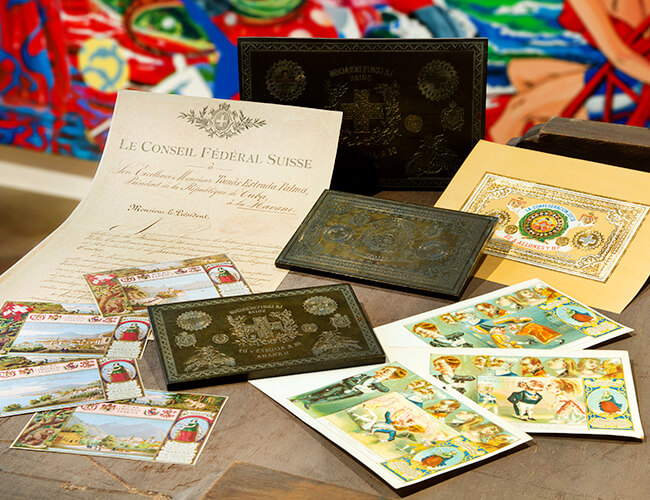Switzerland and Habano
A small country that dominates the world market of precious Cuban vitolas.
Switzerland has been consuming and making cigars for a very long time. The origin of this affection goes back to the second half of the 19th century. The country had almost sixty factories in the cantons of Lucerne and Aargau at that time. This fast-growing sector has led Switzerland to become a tobacco exporter. Imported from Cuba hand-rolled cigars were very rare then because of their high price.
However, a family of refugees who arrived in Geneva in 1911, the Davidoffs, would revolutionize the market by developing an innovative commercial concept: opening the world first retail cigar store. A few years later Zino Davidoff took over the shop of his father Henri.
Keen on high-quality Caribbean cigars, he established excellent relations with Cuba, allowing him to build a gigantic stock and supply all the Europe. In a couple of years he ended up in a monopoly position for the distribution of Habanos in Europe, thus making Geneva a European capital of the Cuban cigar.
Still today Cuba remains at the top of the ranking of importing countries for Switzerland in terms of cigars: every year Cubans sell nearly eight million cigars to the Swiss Confederation, which represents about 65% of the domestic market of cigars.
In addition to the economic interest of cigar trading, Switzerland has always maintained good diplomatic relations with the island of Cuba. A letter of support sent by the Federal Council to Tomás Estrada Palma, the first President of the Republic of Cuba, which was founded in 1902, is an example of that. This historic document shows the Confederation's warm greetings to the new Cuban Republic.
For their part, Cubans have also expressed their esteem for the Confederation on many occasions.
First of all, Luis Susini, a great tobacco merchant, and then Ramón Allones. If the latter was a pioneer of lithographed labels on tobacco boxes, Luis Susini with his brand La Honradez, founded in 1853, was the one that to demonstrate commercial and advertising skills in applying these innovative techniques. He was one of the first industrialists to incorporate the new chromolithographic technique in Cuba with the importation of a chromolithography machine. This machine allowed reproducing vistas in color displaying beautiful drawings, as for example, the Swiss landscapes that we can see in the photo.
Ramón Allones, who established a tradition of decorating boxes, has made a special edition of cigar boxes for Switzerland with a caption "Confederación Suiza" back in the XIXth century. You can also see the vistas used for these boxes on the photo.
The humidor Partagás Subasta, auctioned at the Festival del Habano 2007, is another illustration of strong links between Switzerland and the Habanos.
This unique piece is entirely made of solid mahogany by Michel Perrenoud, a famous and brilliant master of Swiss art who lives in a small town of La Chaux-de-Fonds in the Swiss Jura.
Its pyramidal shape represents the Matterhorn and is stamped with the Partagás logo. It contains 120 Habanos: 10 Lusitanias, 10 Serie P No.2, 50 Serie D No.4 and 50 Serie D No.3.
To discover more about the history of the Cuban cigar in Switzerland, we are delighted to invite you to Art and Culture area, where you will find exclusive pieces - illustrations by Luis Susini with Swiss landscapes, as well as Ramón Allones vistas displaying the federal flag. You will also discover the original letter from the Swiss Federal Council, addressed to Tomás Estrada Palma, first President of the Independent Republic of Cuba.
(Parts from our private collection)
For more information, contact us on +41 22 552 2799


